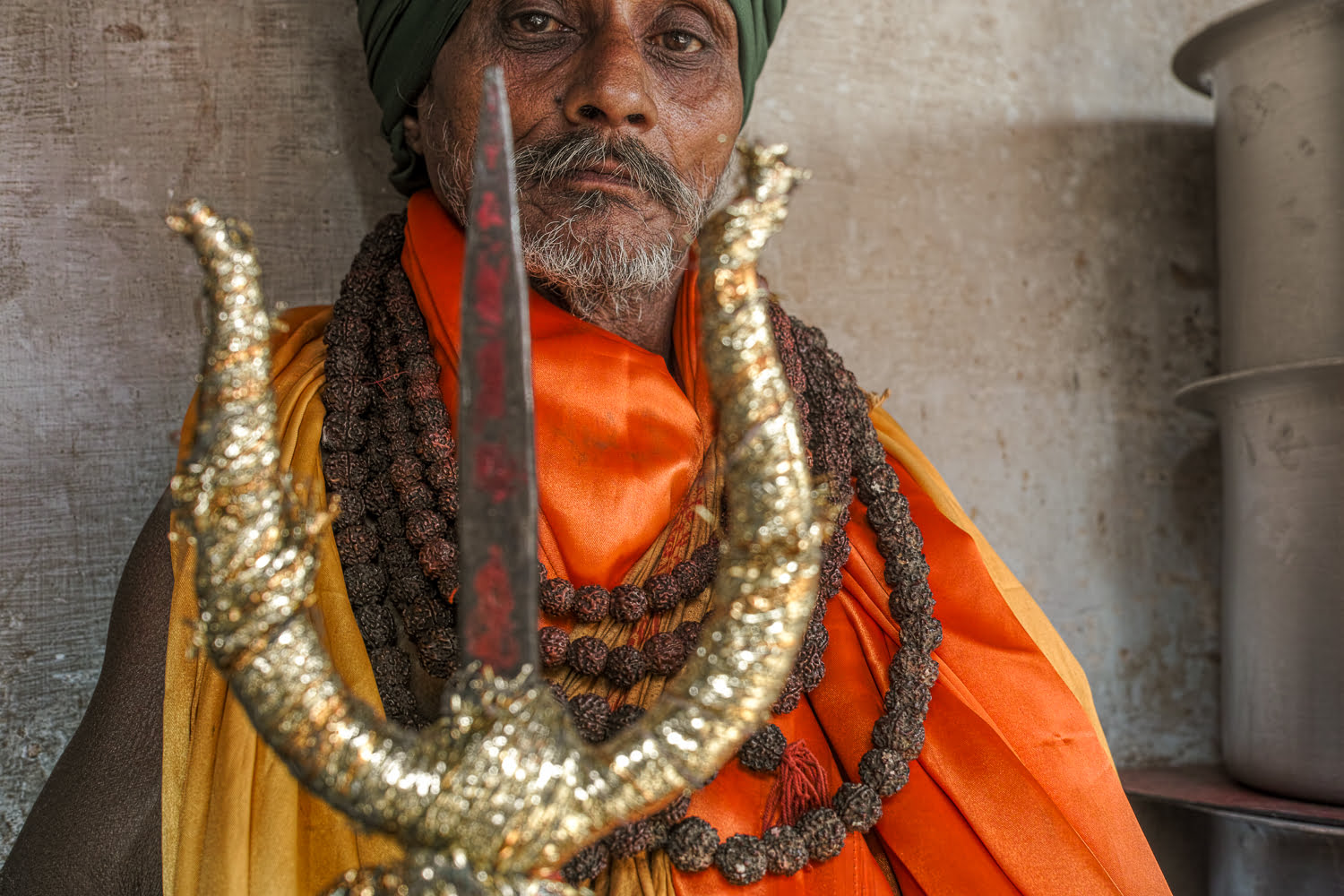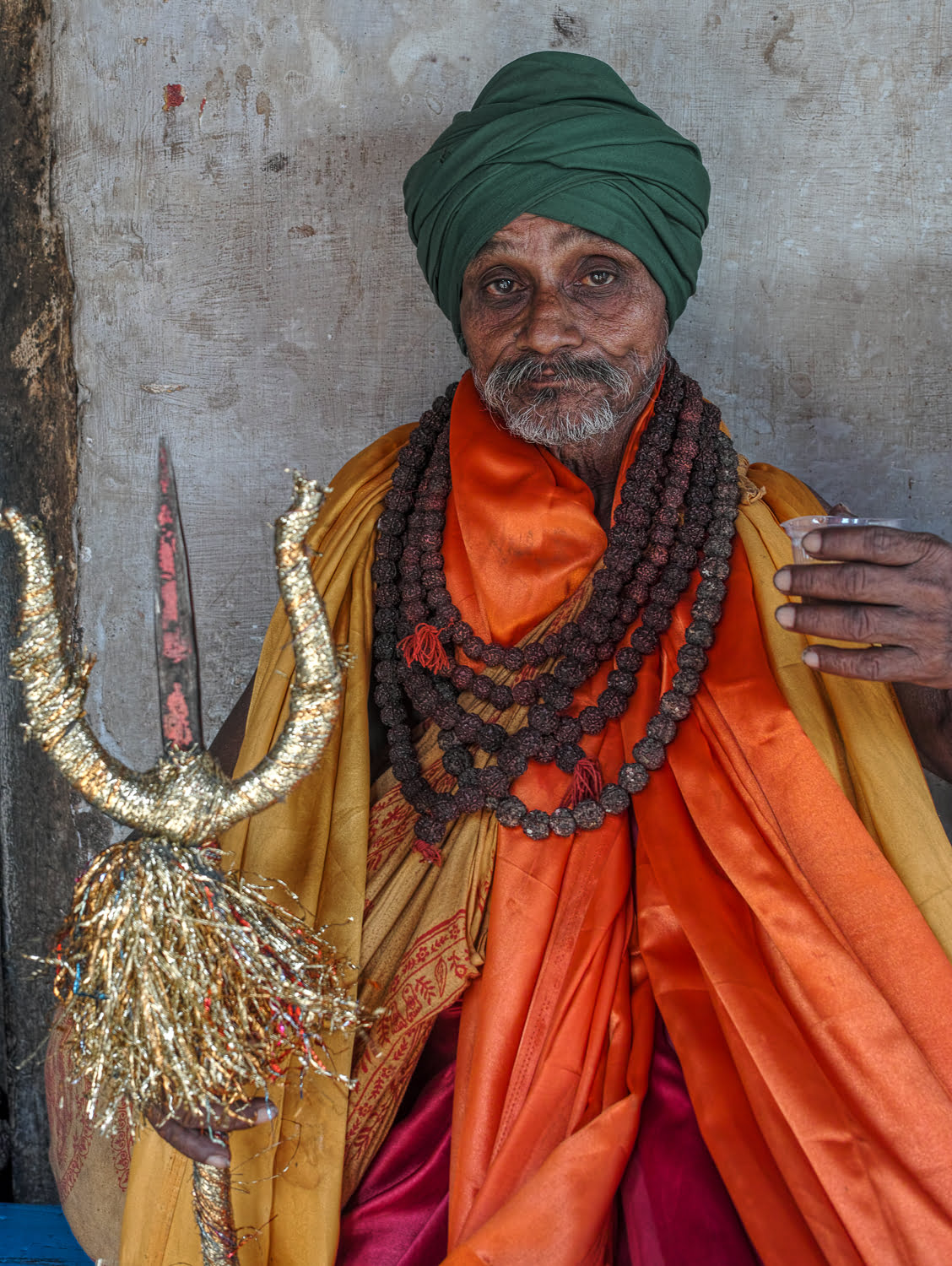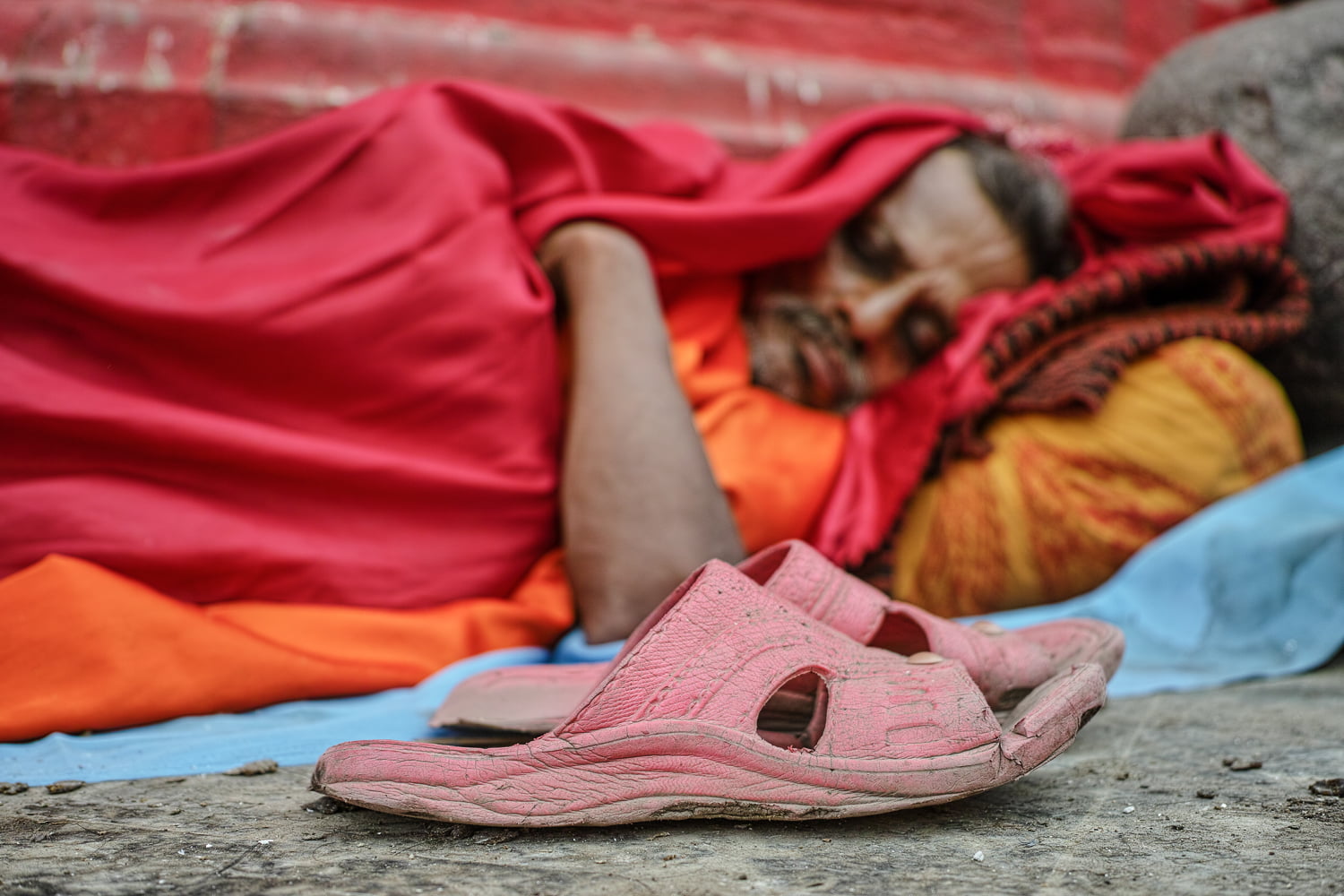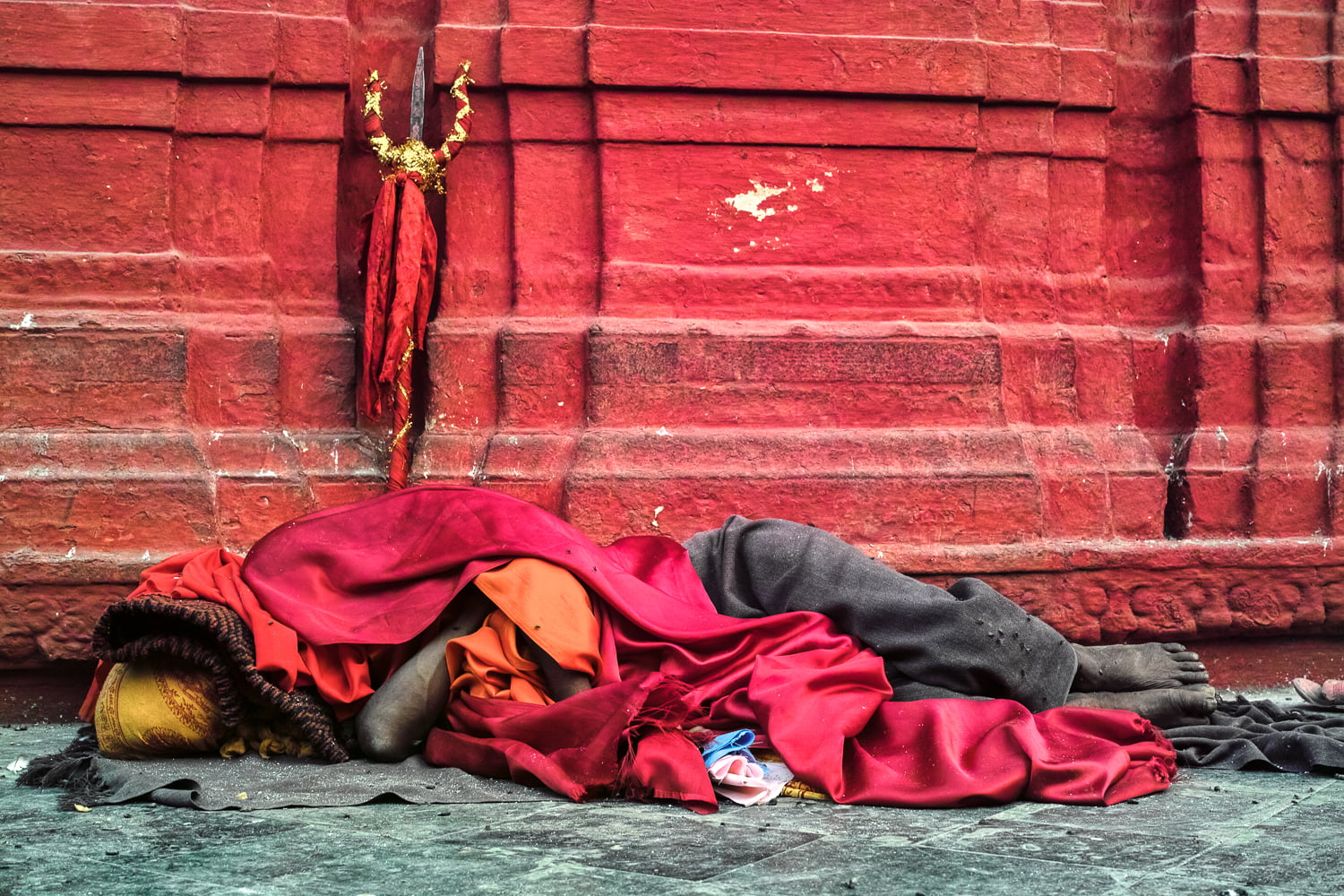The title of this blog entry may seem a little disparaging, though repeated efforts to initiate conversation or a relationship came to nothing. All I know about this man was that he was an older man, diminutive in stature and by his appearance was definitely a sadhu. It also seemed that Manikarnika Ghat appeared to be his home.
He was there every day, sleeping beside one of the temples amongst the goats and cows and spent his days silently watching the antyesti rituals. I never saw him engage in conversation with another human being, apart from to ask for chai, or some food, or to acknowledge with a little nod if chai was bought for him. His whole life seemed to revolve around the ghat where cremations of his Hindu brothers and sisters occured.

Throughout my journeys along the Ganges in India, the one common thread was that of Samsara. No matter where I journeyed, from the mouth of the Ganges in the Indian Ocean, all the way to the Maha Kumbh Mela in Allahabad, private and public pre-occupation with the avoidance of being reborn into another lifetime was absolute.
The cycle of Samsara is defined as birth, life, death, and reincarnation. All living creatures, according to Hindu religion, have an atman, which is a component of Brahman, or a spirit or soul. After death, it is the atman who enters a new body. Through many lives, with or without interruption, the atman strives to achieve moksha, which is liberation from the cycle of rebirth.

Also throughout my travels I had encountered Sadhus.
Becoming a ‘Sadhu’ is one of the highest goals of Hinduism. A Sadhu is an epitome of human virtue, excellence and greatness. He or she is an accomplished person who has crossed the hurdles and stabilized in the perfection and completeness of the ‘self’. All the saints, seers, yogis, pious people, renouncers (sansyasis) and enlightened masters are considered Sadhus irrespective of the paths they have chosen or the methods they practice. The word ‘Sadhu’ is an expression of intent and discipline, almost always suggesting the devout following of a spiritual path which often involves living a rather solitary life, renouncing society and leading a monk like life with basic food provisions and few possessions.
Most Sadhus wear colourful clothing to differentiate themselves from normal society, or wear no clothes at all. Their distinct clothing, or nakedness, symbolises their renunciation of the mortal world and their dedication to a new spiritual existence. Similarly, when a person becomes a Sadhu he or she renounces their old name and is given a new one, symbolising rebirth.
The Sadhus spend their time in devotion to their chosen deity, the most popular of which is Lord Shiva, the Destroyer. Vishnu, the Preserver, can also be worshipped, or his avatars, such as Rama or Krishna. Many adopt Lord Shiva’s long dreadlocks, who uses his hair to temper the potentially catastrophic force of the Ganga as she descends from heaven.

Most Sadhus lead a life of austerity and some wear heavy and wooden chastity belts to highlight their chastity. Some go to extremes in self-inflicted suffering to speed up their path to enlightenment. The most unbelievable to watch are those who remain standing for 24 hours a day for years and years or who hold one arm aloft until all feelings are lost and the muscles atrophy, leaving the Sadhu permanently disfigured. Others choose to regard Shiva, who was known to use marijuana, as the Lord of Hash, and spend most of their lives intoxicated.
One of the most obscure and radical sects are the Aghoris, who express a morbid fascination with death, many spending their time surrounded by corpses and drinking from human skulls Their philosophy is that by acting contrary to all Sadhu and Hindu general behaviour, it will speed up their enlightenment.

I have little doubt that ‘Aged Little Sadhu’ was nearing the end of his life and anticipating achieving moksha in the few months or years he had left; he was anticipating his own death by living at Manikarnika, the very heart of the Samsara cycle. Where his life had taken him was impossible to tell; he was mostly mute. He seemed to have nothing in his life other than the bright clothing he wore and the resplendent Shiva tripod he proudly carried, the emblem of his psychic journey as well as his defence against the hardship of his temporal world. He had no money and survived on alms and gifts of food. He slept on the hard floor with the goats at Manikarnika, wrapped in his finery.
Samsara in motion.